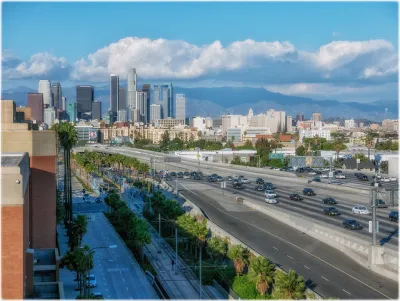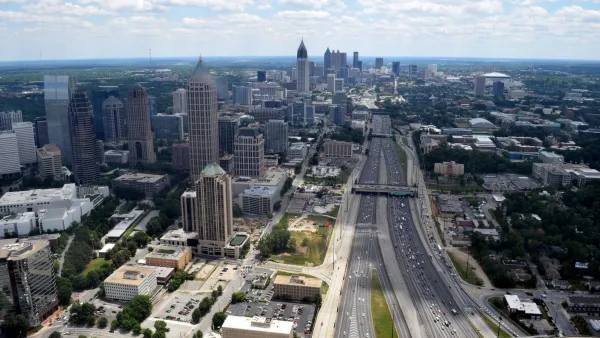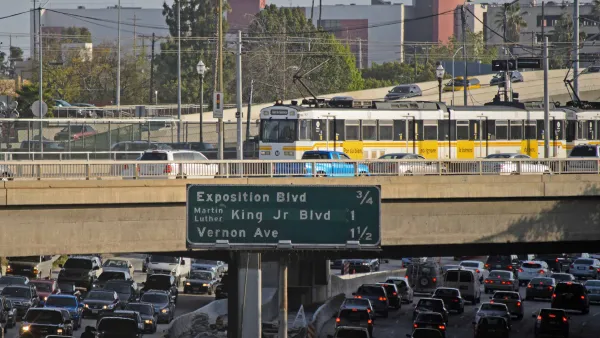The racist history of planning in Los Angeles is particularly evident in the way Interstate freeways were planned in the region.

You've probably heard that the construction of the nation's interstate freeway system was racist both in intent and consequence, but Los Angeles' example provides evidence of just how tragically effective they were to those ends.
After recounting the many monuments that have been pulled down by protestors in recent weeks, in a "moment of truth telling," writes Mathew Fleischer, cities like Los Angeles need to reckon with another monument to racism: urban freeways.
"Most Angelenos don’t think about it as we spew carbon monoxide across the city on our way from Point A to Point B, but our toxic exhaust fumes feed into a pot of racism that’s been stewing for nearly a century," writes Fleischer.
After recalling numerous planning decisions that took Black wealth and property around the Los Angeles region as it boomed in population in the first half of the 20th century, Fleischer mentions the coup de grace, the Interstate Highway Act of 1944, signed on June 29, 1956.
"When the 1944 Federal-Aid Highway Act allocated funds for 1,938 miles of freeways in California, planners used the opportunity, with full federal support, to obliterate as much as possible the casual mingling of the races."
Fleischer tells a lot more of the history of racial segregation and disempowerment as manifest by the freeways in Los Angeles, referencing two books along the way for potential additional reading: If You Build It, They Will Move, by Gilbert Estrada, and The Color of Law, by Richard Rothstein.
Eventually, Felischer ties the history of freeways in Los Angeles back to the contemporary moment of truth telling.
"Remedying the enduring effects of white supremacy will be far more challenging — in progressive Los Angeles as much as in Alabama or Mississippi. And it will be impossible if we aren’t honest about the history that made things the way they are —and the massive undertaking it will require to remedy them."
FULL STORY: Want to tear down insidious monuments to racism and segregation? Bulldoze L.A. freeways

Analysis: Cybertruck Fatality Rate Far Exceeds That of Ford Pinto
The Tesla Cybertruck was recalled seven times last year.

National Parks Layoffs Will Cause Communities to Lose Billions
Thousands of essential park workers were laid off this week, just before the busy spring break season.

Retro-silient?: America’s First “Eco-burb,” The Woodlands Turns 50
A master-planned community north of Houston offers lessons on green infrastructure and resilient design, but falls short of its founder’s lofty affordability and walkability goals.

Test News Post 1
This is a summary

Analysis: Cybertruck Fatality Rate Far Exceeds That of Ford Pinto
The Tesla Cybertruck was recalled seven times last year.

Test News Headline 46
Test for the image on the front page.
Urban Design for Planners 1: Software Tools
This six-course series explores essential urban design concepts using open source software and equips planners with the tools they need to participate fully in the urban design process.
Planning for Universal Design
Learn the tools for implementing Universal Design in planning regulations.
EMC Planning Group, Inc.
Planetizen
Planetizen
Mpact (formerly Rail~Volution)
Great Falls Development Authority, Inc.
HUDs Office of Policy Development and Research
NYU Wagner Graduate School of Public Service




























